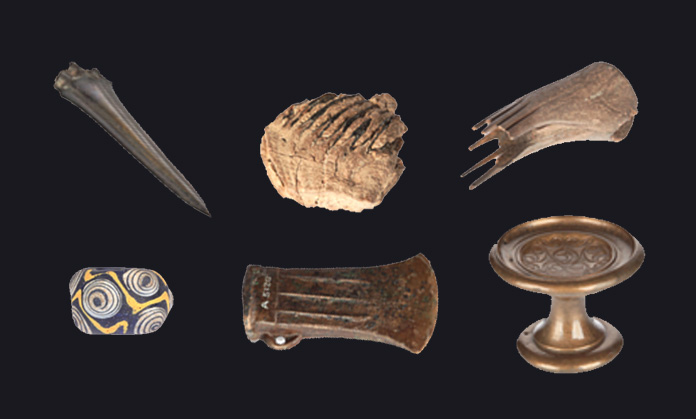Bronze Age axehead
Get up close to a real piece of prehistory!
With a mouse and keyboard: Click on this object and drag your mouse to spin it up and down or left to right, or use your mouse wheel. To zoom in, click once on the object, and move your mouse to move the view. To zoom out again, drag your mouse off the object.
On a touchscreen: Drag your finger up and down or left and right on the object to spin it. To zoom in, touch the arrow button in the top left corner to enter full screen mode, then tap twice on the object very quickly. Drag your finger to move the view. To zoom out again, touch above or below the object.

What is it?
Bronze is made by mixing copper and tin. First the copper and tin are extracted from rocks by heating them to high temperatures. This process is called smelting.
When the copper and tin have been mixed, the liquid bronze is poured into a mould to create the axehead. Look closely at the sides of the axehead and you will see the casting seams. These can be seen if a mould is made from two pieces joined together.
You can find out how an axehead may have been cast in our Bronze Age video on YouTube.
What do you think?
- What do you think this axehead was used for?
- Why do you think this axehead is hollow?
- Have you ever made anything using a mould?
Further info
Object ID number: A5120
If you use this image, please credit it as follows:
Digital image copyright Museum of London









